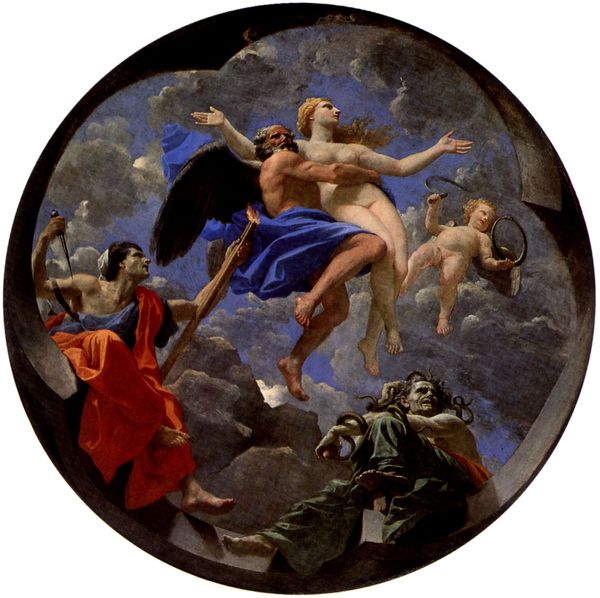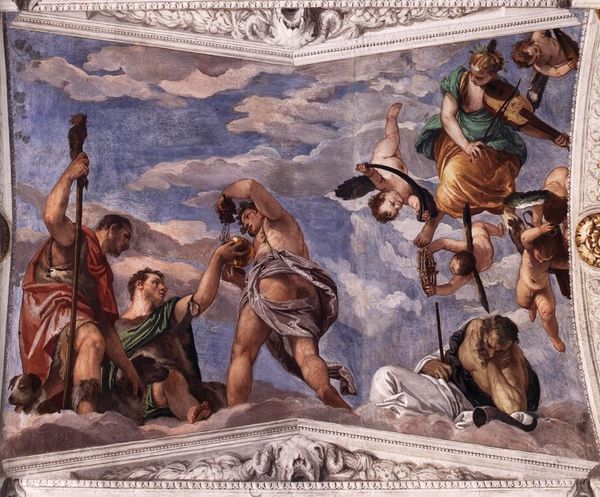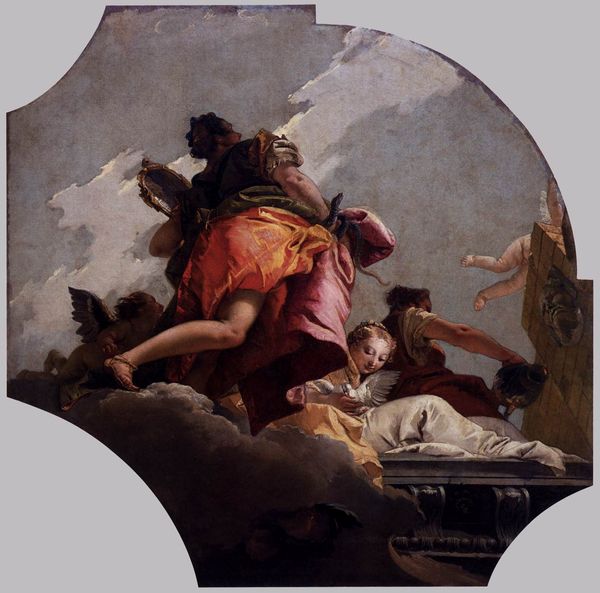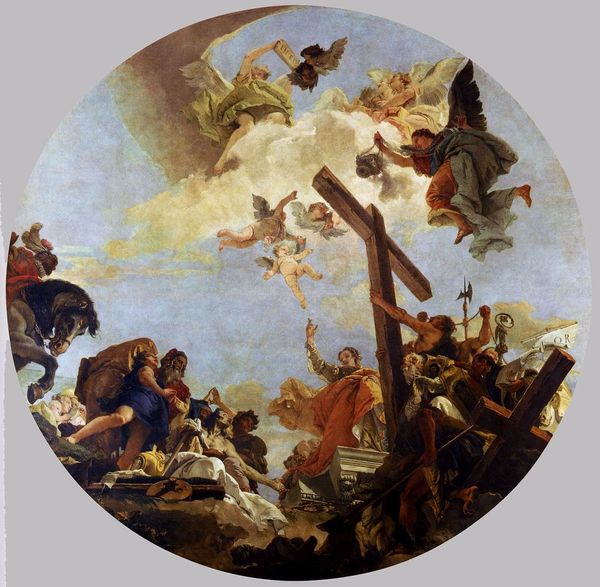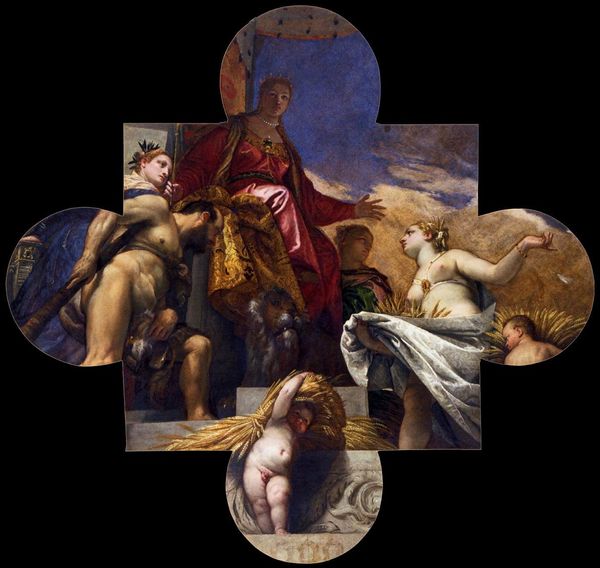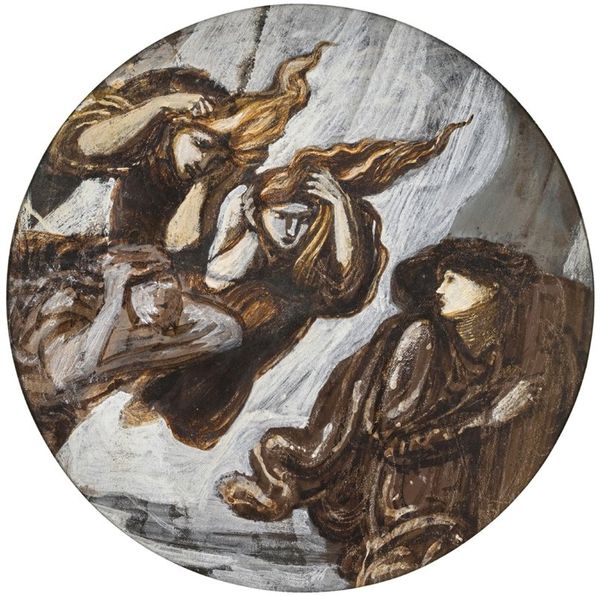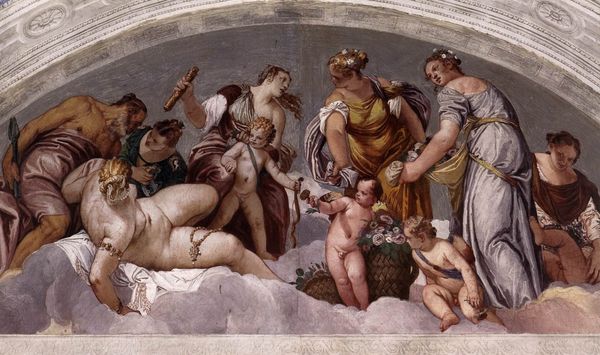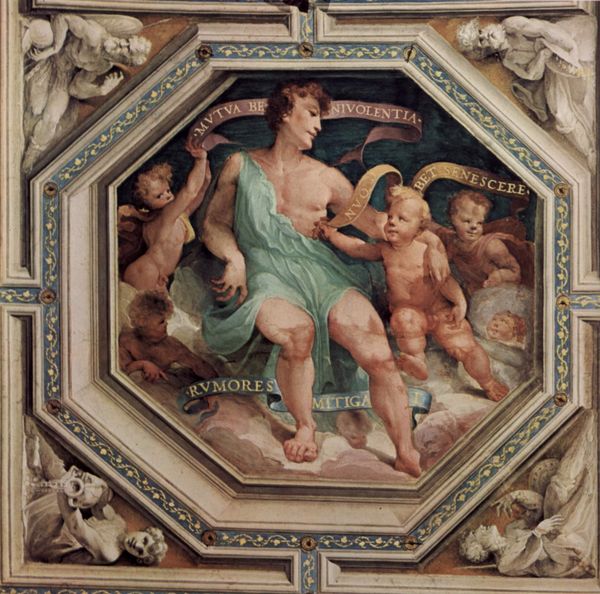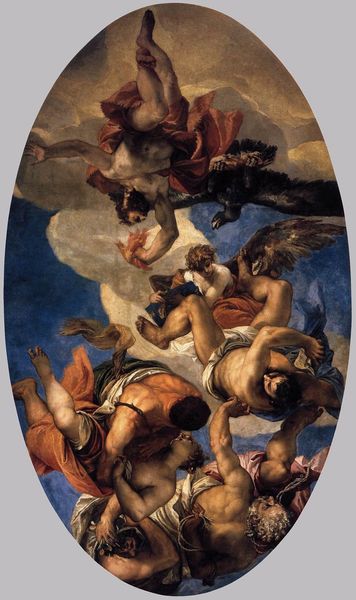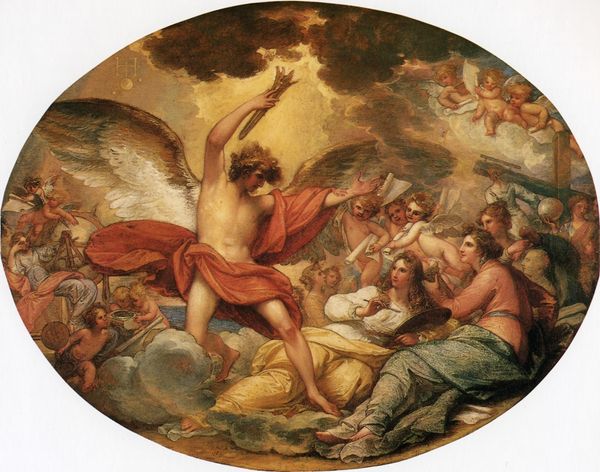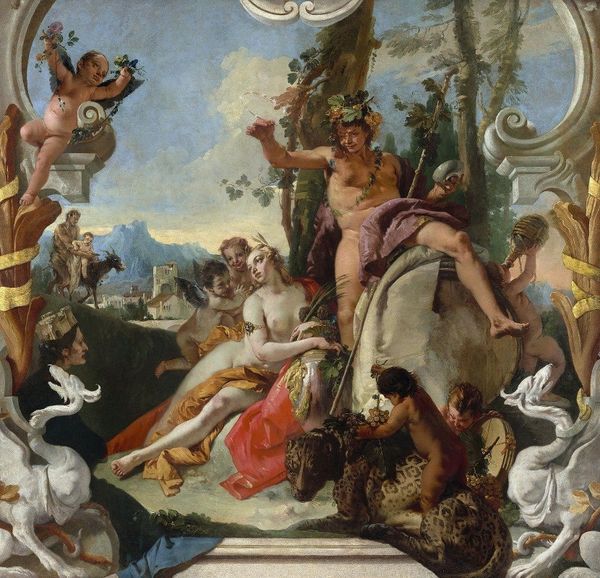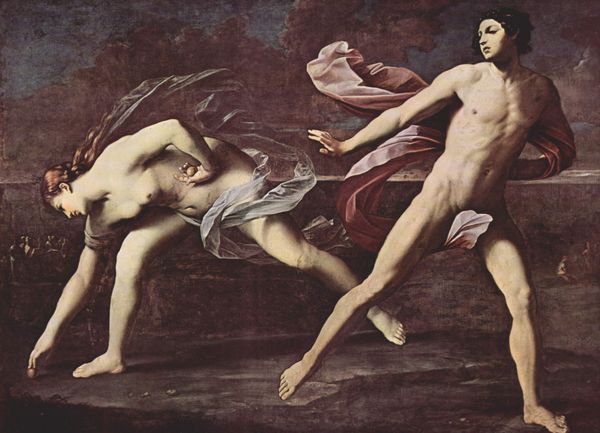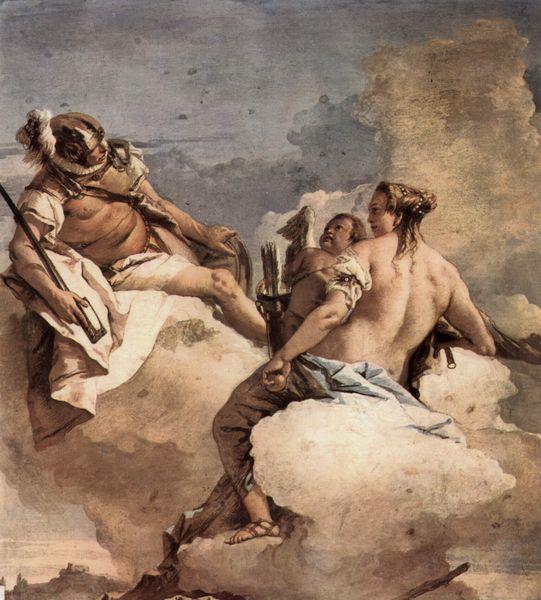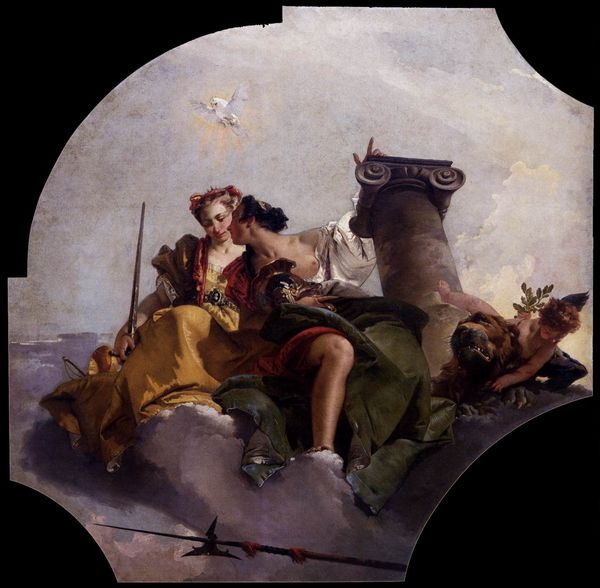
painting
#
portrait
#
allegory
#
painting
#
mannerism
#
history-painting
Copyright: Public domain
Editor: This is "Hermes and Athena," painted by Bartholomeus Spranger in 1585. It's a rather striking painting, and the first thing I noticed was the figures' dynamic poses – there's so much implied movement. How would you analyze its visual structure? Curator: Indeed. Note the carefully orchestrated asymmetry and dynamic tension between the figures, hallmarks of Mannerism. Observe how Spranger employs contrapposto, particularly in Hermes’s pose, to create a sense of elegant instability. Consider the way the artist's choice of color, with the juxtaposition of cool blues and warmer flesh tones, creates a visual push and pull, enhancing the painting's dynamism. Do you see how the circular composition reinforces this sense of constant motion? Editor: I see that now, yes. It's almost like a snapshot of figures perpetually in motion. But how do we interpret the significance of this visual choreography, of their bodies arcing? Curator: The figures’ elaborate poses contribute to the overall artificiality, typical of Mannerist aesthetics. Their gestures and expressions aren't about realism but about conveying an idealized, intellectual concept of beauty and grace. Consider also how the textures and treatment of light contribute; smooth, porcelain skin contrasting with drapery to emphasize their almost ethereal nature. Editor: So, it's less about storytelling and more about exploring aesthetic and theoretical ideas through form and color? Curator: Precisely. Spranger manipulates the elements of art - form, line, color, texture, space – to create a sophisticated visual experience that prioritizes artifice and refinement over naturalism. Editor: I never really appreciated the skill and planning behind that kind of composition. Thank you, I'm starting to look at the piece with fresh eyes. Curator: It's my pleasure. I've benefited too, looking at it through your observations of implied motion.
Comments
No comments
Be the first to comment and join the conversation on the ultimate creative platform.
